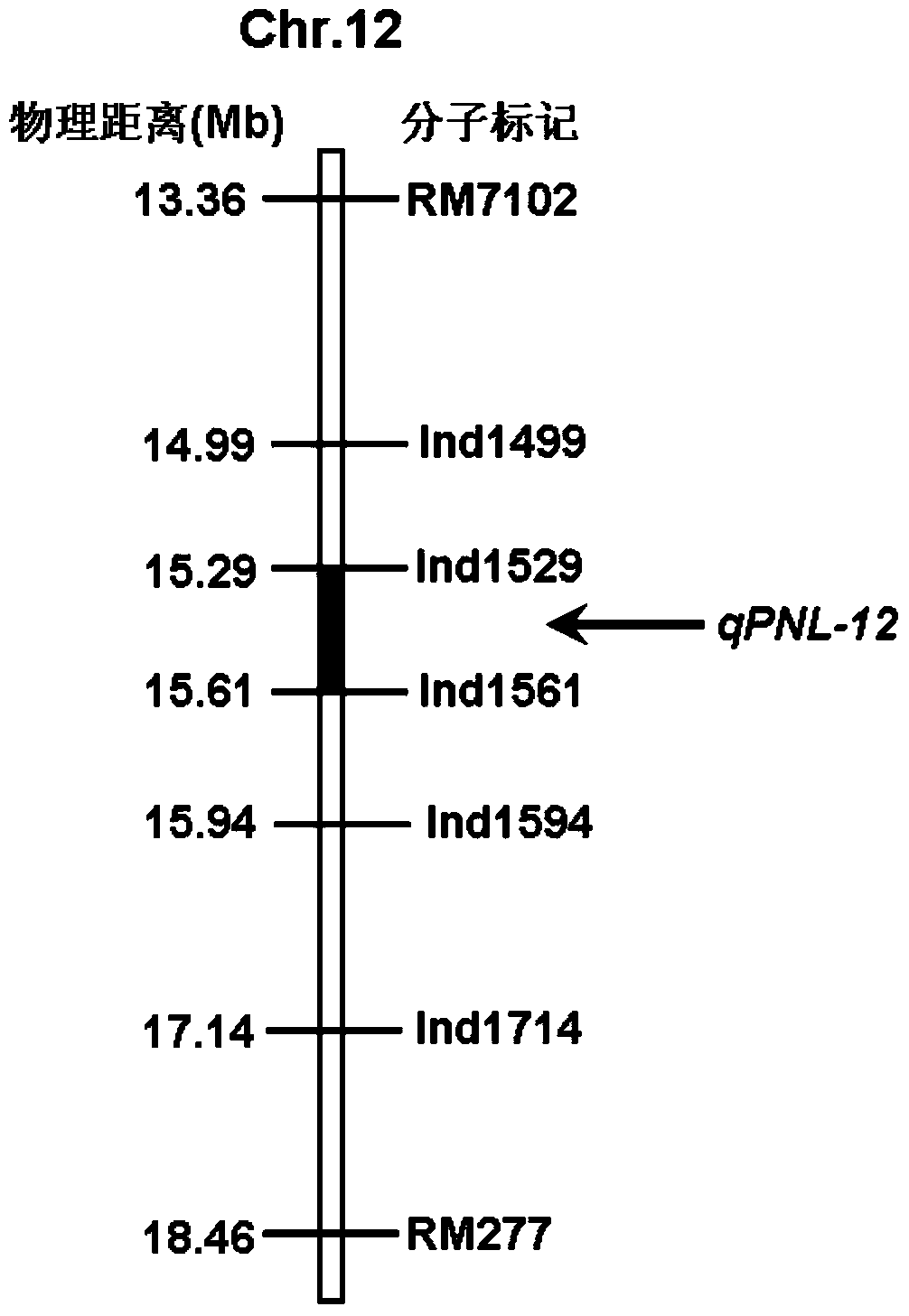A Molecular Marker of Rice Panicle Length Gene qpnl‑12
A molecular marker, qpnl-12 technology, applied in the field of rice genetic improvement and agricultural biotechnology applications, to achieve strong specificity, high stability, and improve the efficiency of breeding and selection
- Summary
- Abstract
- Description
- Claims
- Application Information
AI Technical Summary
Problems solved by technology
Method used
Image
Examples
Embodiment 1
[0023] Example 1 Development of Molecular Marker Tightly Linked with Rice Neck Length New Gene qPNL-12
[0024] 1) Phenotype of substitution line C115 and construction of segregation population
[0025] Using a set of high-generation backcross replacement lines with 119 lines constructed with the indica rice variety 9311 as the recipient parent and the japonica rice variety Nipponbare as the donor parent, a very short panicle neck was detected through the investigation of the panicle neck length traits The phenotype of the replacement line C115 has a very significant difference in the neck length of 9311 ( figure 1a, b), and there are also significant differences in plant height between C115 and 9311 ( figure 1 c), other agronomic traits such as panicle length, panicle number, grains per panicle and seed setting rate were not significantly different ( figure 1 d-g), the relative length of the inverted I stem node and the plant height of C115 has a very significant difference...
Embodiment 2
[0033] Example 2 Polymorphism Detection and Linkage Analysis of a Molecular Marker Tightly Linked to the New Rice Panicle Length Gene qPNL-12
[0034] 1) Genomic DNA extraction
[0035] Leaf samples were taken from rice materials to be extracted for DNA at the peak tillering stage of rice. Genomic DNA of parents 9311, C115 and 30 F2 individual plants were extracted for polymorphism screening of 22 InDel markers; 306 individual plants with short neck phenotype were extracted from F2 population for linkage analysis of polymorphic markers and qPNL-12 gene fine mapping; extract 100 F3 individual plants for subsequent effect verification of molecular markers.
[0036] Genomic DNA was extracted from rice leaves using the SDS method, and the operation steps were referred to Della porta S L, et al., Plant Mol Biol Rep, 1983, 1(1):19221.
[0037] The specific steps are: take the rice seedling leaves, grind them with liquid nitrogen in a mortar pre-cooled at -20°C and put them into a ...
Embodiment 3
[0045] Example 3 Cloning and sequencing of molecular markers Ind1529 and Ind1561
[0046] Using the parental 9311 and C115 genomic DNA as templates, the forward and reverse primers of molecular markers Ind1529 and Ind1561 were used as Ind1529-F / Ind1529-R and Ind1561-F / Ind1561-R primer pairs, respectively, and high-fidelity enzymes were used for PCR amplification . Take 1 μL of PCR product and connect with pMD19-T vector at room temperature for 10 minutes, transform Escherichia coli competent cells DH5α by heat shock, and culture the transformed bacteria in 100ml LB liquid medium for 1 hour with simple shaking, and then spread it on the medium containing 100μg / ml ampicillin LB solid plates were incubated at 37°C for 14 hours. After colony PCR detection, positive clones were selected and sent to Shanghai Handsome Biotech Co., Ltd. for DNA sequence determination.
[0047] The sequencing results showed that the length of the amplified band of the primers Ind1529-F / Ind1529-R in C...
PUM
 Login to View More
Login to View More Abstract
Description
Claims
Application Information
 Login to View More
Login to View More - R&D
- Intellectual Property
- Life Sciences
- Materials
- Tech Scout
- Unparalleled Data Quality
- Higher Quality Content
- 60% Fewer Hallucinations
Browse by: Latest US Patents, China's latest patents, Technical Efficacy Thesaurus, Application Domain, Technology Topic, Popular Technical Reports.
© 2025 PatSnap. All rights reserved.Legal|Privacy policy|Modern Slavery Act Transparency Statement|Sitemap|About US| Contact US: help@patsnap.com



